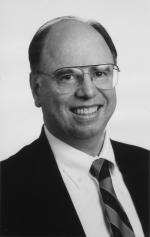

David H. Staelin of Wellesley, M.I.T. Professor of Electrical Engineering (1965 – 2011), succumbed November 10, 2011 to cancer at age 73. He was an assistant director of the M.I.T. Lincoln Laboratory 1990-2001; a director of Environmental Research and Technology, EMPower, and founding Chairman of PictureTel Corporation; a member of the (U.S.) President’s Information Technology Advisory Committee 2002-2005, and co-founder of the MIT Venture Mentoring Service.
His teaching and research encompassed radioastronomy, remote sensing, signal processing and estimation, and neural computing. His doctoral work analyzed the atmosphere of Venus and determined that Venus, with an atmosphere of primarily carbon dioxide at 700 degrees, would not be suitable for life and that life on Mars would be more likely. He co-discovered the pulsar in the Crab Nebula (1968), a discovery that helped confirm the theory of neutron stars. He was co-investigator of a microwave instrument on the Voyager spacecraft that studied the atmosphere of the outer planets. He co-developed astrometric optical interferometers that measure stellar positions with great accuracy, especially useful for the navy. (Interferometers place receivers a known distance apart and, using the time difference when signals are received, can determine the distance to a remote object.)
Dave was principal investigator of the first microwave instruments to map global temperature and humidity on satellites launched in 1975 and has continued throughout his career to study the Earth’s atmosphere. More recent work involves measuring precipitation, including snowfall on the north pole and melting of the polar ice cap, work with implications for global warming. He helped develop techniques that incorporate atmospheric data into the national weather prediction models.
In signal processing he co-developed algorithms that have evolved into methods now incorporated in national digital standards for many of the electronic devices that have become part of our everyday lives, like HDTV. He also co-developed video compression algorithms that led to the formation of PictureTel, the first video conferencing company to use dial-up rather than leased telephone lines, making video conferencing affordable for many institutions and corporations.
His most recent work developed a model for how neurons in the brain learn. This work, a collaborative effort with his son Carl, is captured in a book just published, Models for Neural Spike Computation and Cognition.
He was a member of Institute of Electrical and Electronics Engineers (Fellow), the
American Meteorological Society, the American Geophysical Union, URSI (International Union for Radio Science), and the American Association for the Advancement of Science (Fellow). He received lifetime achievement awards from both the IEEE and URSI.
In addition to teaching undergraduates, he supervised one hundred forty-six graduate students, many of whom have gone on to distinguished academic or professional careers or into industry as entrepreneurs technical leaders, and executives. His teaching electromagnetics led to publishing, as lead author, Electromagnetic Waves and his course notes are available on the MIT website.
As a faculty advisor in the MIT Leaders for Manufacturing Program (1985 – 1998) he supervised students working in corporations like Ford Motor Company, John Deere, Hewlett Packard and Gensym. The students analyzed manufacturing processes and identified improvements that sometimes saved the companies as much as a million dollars a year.
His experience with start-up companies led him to co-found the MIT Venture Mentoring Service (VMS), eliciting the help primarily of experienced MIT alumni to advise young companies in any of the areas where the company might need help, from writing a business plan to hiring officers to raising money. The Service to date has served 1050 companies and has helped them raise over $950 million. VMS serves as an example for other universities and government agencies that want to establish similar services.
Born and raised in Toledo, Ohio and educated at MIT, he married Ellen Mahoney and settled in Wellesley in 1965 where they raised their children, Carl, Katharine, and Paul. He is survived by his wife and children; daughters-in-law Sigal and Jenny; six grandchildren: Alexander, Adam, Ella, Lauren, Steven and Claire; and his siblings Earl, Stephen, and Mimi Ferrell.
Visiting hours at the George F. Doherty & Sons Funeral Home, 477 Washington St. WELLESLEY, Friday, December 2nd from 2-4 & 7-9 PM. Relatives and friends kindly invited. A Memorial Service will be held Saturday, December 3rd at 11 AM at the Unitarian-Universalist Society of Wellesley Hills, 309 Washington Street, Wellesley. Burial services will be private. In lieu of flowers the family requests that contributions be made to PBS with an annotation “for the News Hour”, Attention Brian Reddington, PBS Foundation, 2100 Crystal Drive, Arlington VA 22202 or to a favorite charity.